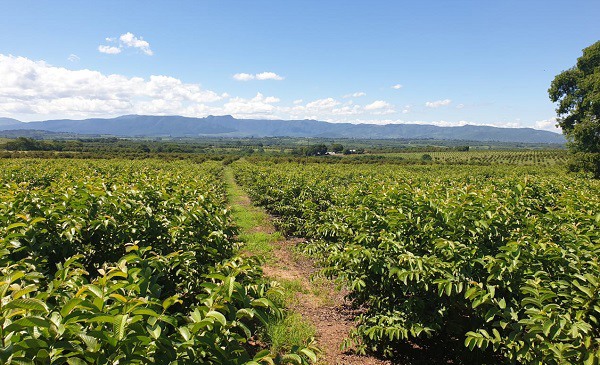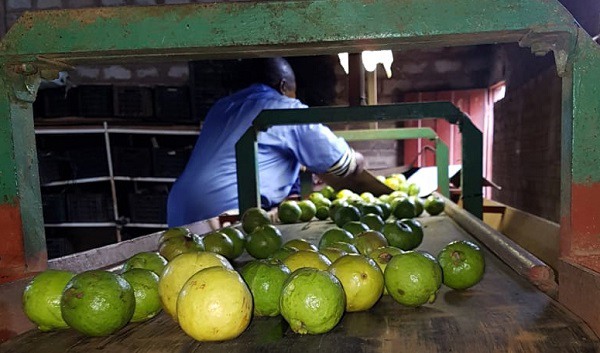Recent heavy rains in eastern Limpopo have lifted the spirits of the province’s fruit and nut farmers, among them Stef de Lange of SDL Boerdery. “We’re very grateful for the rain – we had more than 300mm over two days," he says.
The rain will be good for sizing on all their fruit, including lemons. The lemon harvest has commenced, initially for the domestic market while they are waiting for colour to start supplying Dole for exports to Russia (larger counts) and the Middle East in March. On the domestic lemon market he notes that prices have started coming down as volumes have increased.
Apart from lemons, the farm also produces macadamias and bananas, plus the new addition of Star Ruby grapefruit, as well as guavas for wholesale fresh markets.
In Limpopo and Mpumalanga the amount of pink guava production has dramatically fallen due to a soilborne fungus that causes wilting disease, but farmers like Stef have started planting the Indian Lucknow49 cultivar of white guava which has so far proven itself resistant to the disease which remains indefinitely in the soil (thereby slashing the amount of land available for guavas).
 Four year-old Fan Retief pink guava trees, starting to show signs of the inevitable wilting disease (photo: Stef de Lange)
Four year-old Fan Retief pink guava trees, starting to show signs of the inevitable wilting disease (photo: Stef de Lange)
Stef points out that the Lucknow49 plantings are still young and they're not planting it where there were guava orchards previously, for safety's sake. "If the variety works and we know for certain that it is disease-resistant, we might try it, but we'll first wait a year or two."
It has two further benefits: it is sweeter than the pink ‘Fan Retief” guava to which South Africans are accustomed and it has a shelf life of two or three days longer. It is also earlier than the pink guava whose season at SDL Boerdery will start in two weeks.
However, in the South African context it has one major drawback: it is not pink, which is what juicing companies, retailers and the public want.
Stef has been sending a pallet a week to the municipal markets, alternating between Pretoria and Johannesburg, where he has had to convince his market agents to take a chance on the new guava, but currently his usual retail client hasn’t yet come round to the white guava.
“Soon there won’t be pink guavas left in northern SA”
In general supermarkets are only willing to take the white guava at uneconomically low prices (he stops sending to the municipal market when the price falls below R20 (1.2 euro) for a 2kg carton).
 The guavas are packed on a converted litchi packline
The guavas are packed on a converted litchi packline
As far as Stef is concerned, circumstances will oblige them to overcome their bias. “The juicing companies might not like the white guava but soon there won’t be pink guavas left in the north of country.”
He sends over 90% of his guavas for processing into pulp for use in, among other things, ice lollies.
New pink guava trees expected to only live 4-5 years
He still plants new orchards of the pink guava on diminishing available virgin land but with the expectation that the trees will bear for three to maximum five years, before succumbing to the fungal disease.
“If the trees can last for four years then it’s fine, also because these days we plant it at a high density of 4 metres by 2 metres because the trees won’t get very large, so that increases the tonnage per hectare.”
The pink Fan Retief guava to which South Africans are accustomed
The disease progression is very quick – trees die from the inside within a year to 18 months – and farmers in this area have become very well-acquainted with the symptoms which have nearly decimated pink guava production in the north (the disease is not present in the Western Cape).
There is interest in exports from time to time, but it’s difficult to harvest the large volumes needed to fill a container.
Through pruning techniques he can stretch the season of both white and pink guavas until July.
For more information:
Stef de Lange
SDL Boerdery
Email: [email protected]
